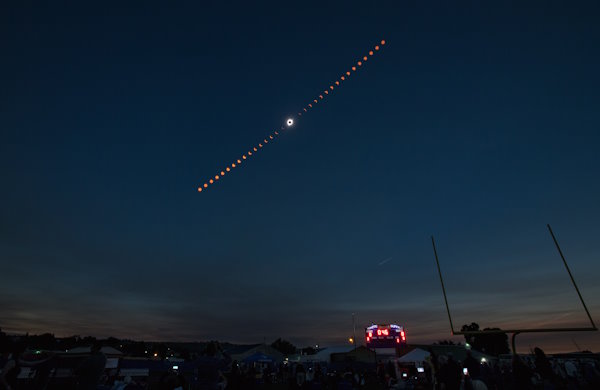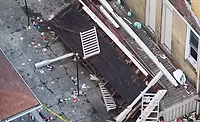Roofing Safety
Roofing Safely During a Solar Eclipse
Solar eclipses don't happen often, so it's important to know what precautions to take when working during the celestial event

On Monday, April 8, a total solar eclipse will cut across southern and eastern portions of North America. It’ll be an awesome event to witness, but roofing crews must do so safely while on the job to avoid severe eye damage.
The event is the result of the moon passing between Earth and the sun, thereby blocking the face of the sun. The entire event will last roughly two hours, with totality (when the moon completely blocks the sun) expected to last about four minutes.
According to NASA, unless you’re looking at the sun during the brief totality, it is not safe to look directly at the eclipse without specialized eye protection. Viewing any part of the bright sun — whether through a camera lens, binoculars, or a telescope — without a special solar filter will “instantly cause severe eye injury.”
Eye Safety While Roofing
Solar viewing glasses, or “eclipse glasses,” are the only eye protection suited for viewing the eclipse. Regular sunglasses won’t cut it, regardless of how dark they might be or if they're polarized. Eclipse glasses are available online and at big-box stores.
“You should never assume that you can look away quickly enough to avoid eye damage because every person is different in terms of their retinal sensitivity,” NASA’s website states.
It'll be tempting to view the eclipse while perched atop a roof at a job site, but it’s recommended that roofing crews in the path of the eclipse resist the urge to view the eclipse without proper eye protection. Again, it’s only safe to briefly look at the eclipse during the totality, as the sun’s radiation is too weak to have a harmful effect when the sun is completely covered.
If you’re in the path of totality, you can experience the total eclipse. Those outside of the path might observe a partial eclipse, where the moon partially covers the sun. If this is the case, eclipse glasses are still required to safely view the event.

This composite image shows the progression of a total solar eclipse over Madras, Oregon, on Monday, Aug. 21, 2017. A total solar eclipse swept across a narrow portion of the contiguous United States from Lincoln Beach, Oregon, to Charleston, South Carolina. A partial solar eclipse was visible across the entire North American continent, along with parts of South America, Africa, and Europe. Photo Credit: (NASA/Aubrey Gemignani)
If it’s a cloudy day in your area, chances are you won’t be able to view the eclipse. However, even with cloud cover, the darkness caused by the eclipse will still be noticeable, as if it were dawn or dusk.
Protect Against the Sun
In addition to visual safety, it’s important to remember that the sun will be quite bright during the eclipse. If you’re working outside, practice the usual outdoor safety tips, like wearing sunscreen and protective clothing to prevent sun damage.
Supervisors may want to adjust work schedules around the eclipse to avoid peak times. Just like working on a hot and sunny day, contractors should have shaded areas to protect workers from direct sun exposure.
If you’re keen on observing the eclipse but don’t have eye protection, there are methods of indirectly viewing it. The easiest way is pinhole viewing, where a small opening (like a hole punched in a card or the perforations in a pasta strainer) can project a crescent shape on the ground. You can even cross your outstretched, slightly open fingers over each other and, with your back to the sun, view the shadow of your fingers to see the crescent shape caused by the eclipse.
To view the path of totality and to determine when the eclipse is happening in your area, visit NASA’s 2024 eclipse guide.
Looking for a reprint of this article?
From high-res PDFs to custom plaques, order your copy today!







